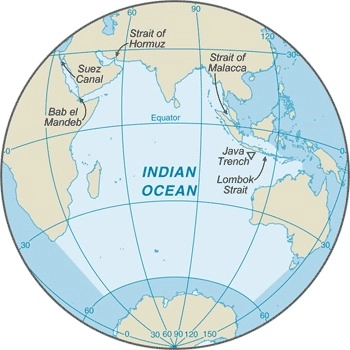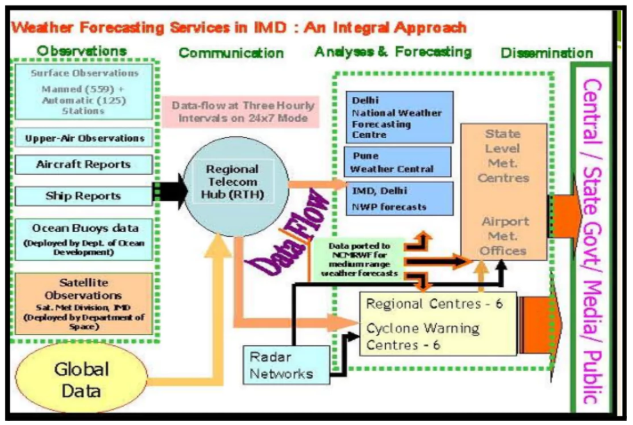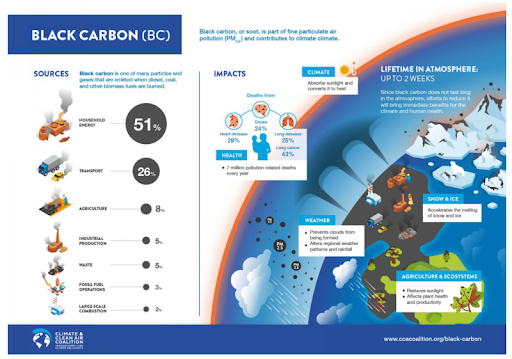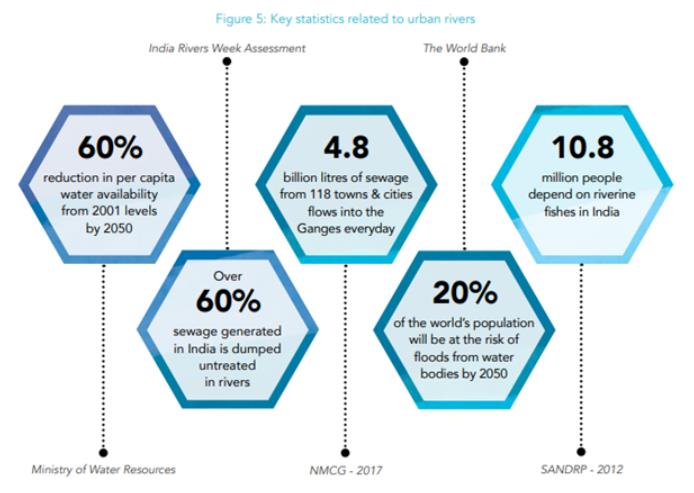24 Jun to 10 Jul, 2025
CLIMATE CHANGE THREATENS FUTURE FOOD SECURITY
Why in news : Study warns that every 1°C rise in global temperatures will lead to a 4% reduction in per capita calorie availability by 2100, severely impacting staple crops like wheat, rice, maize, and soybean.
About :
Unlike natural climatic variability, current climate change exhibits marked spatiotemporal disparities. For example, the Arctic region is warming nearly four times faster than the global average (IPCC, 2023), while South Asia experiences increasingly erratic monsoons, with a 10–15% rise in extreme rainfall events since the mid-20th century
Food security emerges as a multidimensional construct, encompassing:
- Availability: Adequate food production and supply (e.g., cereal output).
- Accessibility: Economic and physical ability to obtain food.
- Utilization: Proper biological use of food ensuring nutritional well-being.
- Stability: Reliable access to food over time without risks of disruption.
The FAO (2023) estimates that over 735 million people faced hunger in 2022, a figure likely to rise as climate volatility disrupts agricultural systems, water resources, and ecosystems.
India's wheat yields are projected to decline by 6–10% per 1°C rise in temperature (ICAR-NICRA, 2022). Similarly, Vietnam’s Mekong Delta, responsible for 50% of the country’s rice production, faces salinity intrusion, threatening both national and global rice markets.
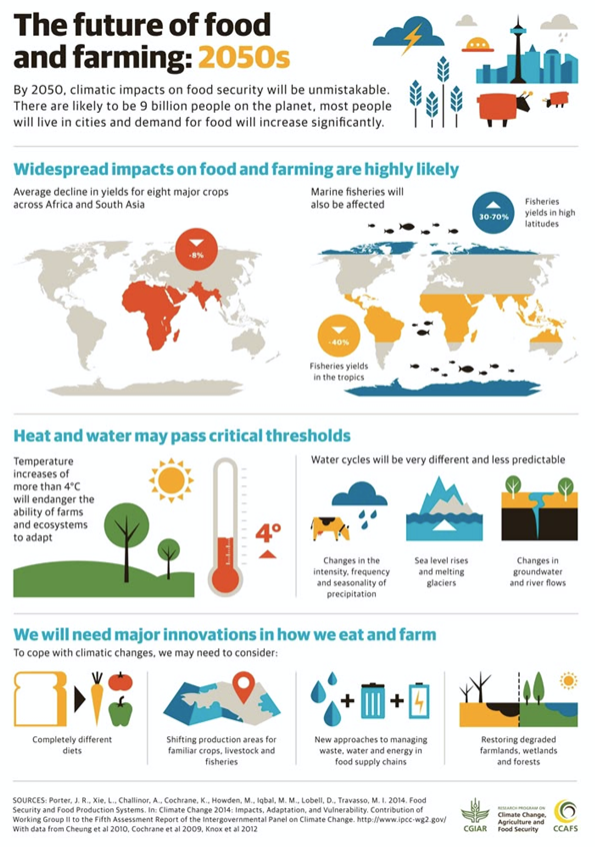
Key Geographical Concepts in Agricultural Climate Linkage
- Carrying Capacity : This concept reflects the maximum population and agricultural output a region can sustain under given natural conditions.
Punjab’s Green Revolution success was initially attributed to high carrying capacity due to fertile soils and canal irrigation, but now faces ecological stress due to over-cropping and groundwater depletion, - Agro-Ecological Zoning (AEZ) : FAO’s AEZ approach classifies land based on climate, soil, and terrain suitability for specific crops.
In Kenya, maize cultivation has shifted uphill as temperature zones shift, a trend AEZ models have helped map and forecast. - Spatial Variability in Agricultural Productivity: Yields vary not just due to inputs, but also due to micro-climatic variations, elevation, and rainfall gradients.In India, rice productivity is around 4,000 kg/ha in Punjab but less than 1,500 kg/ha in Eastern Odisha, largely due to differences in water availability, solar radiation, and temperature stress during flowering.
Mechanisms Through Which Climate Change Threatens Food Security
- Rising Temperatures and Heat Stress : Shifting thermal belts are altering the spatial and temporal suitability of crop production. Increased evapotranspiration rates reduce soil moisture, making irrigation-dependent agriculture more vulnerable, especially in semi-arid zones.
- Altered Rainfall Patterns and Hydrological Extremes : Bundelkhand regularly faces meteorological droughts, resulting in crop failure and out-migration.Assam faces both flash floods and riverine floods from the Brahmaputra, destroying rice fields annually.Erratic monsoon behavior impacts sowing schedules: a delay of even 7–10 days in monsoon onset can reduce rice yields by 15–20% in Eastern India.
- Changing Pest and Disease Dynamics : Rising temperatures and humidity facilitate the expansion of pest populations into newer latitudes and altitudes.
The fall armyworm, traditionally a pest in the Americas, has now spread to India and sub-Saharan Africa, destroying maize and sorghum crops. - Declining Water Availability : Groundwater depletion in states like Punjab and Haryana is compounded by reduced recharge due to erratic rainfall.
- Disruption of Livestock and Fisheries : Livestock suffer from heat stress, declining productivity and increasing vulnerability to diseases (e.g., foot-and-mouth disease).
In marine systems, warming oceans and acidification affect fish migration and breeding patterns, threatening coastal food systems.
Impact of Climate Change on Food Security
- Environmental Degradation and Agricultural Unsustainability : The Indo-Gangetic Plains, once highly productive, now face nutrient depletion and salinization due to excessive fertilizer use and canal irrigation under changing climate.FAO (2022) estimates that 33% of global soils are degraded, threatening food production capacity.
- Limits to Growth and Biophysical Constraints : Based on Club of Rome's "Limits to Growth" theory (1972), unchecked exploitation of natural systems under climate stress results in systemic collapse of food systems.Carrying capacity of regions is being exceeded in many agricultural zones.Bundelkhand faces biophysical limits due to repeated droughts and water scarcity, reducing its food production potential.
- Nutritional Problems and Famine Risks : In India, child stunting in tribal regions of Madhya Pradesh and Odisha has worsened due to climate shocks disrupting food access
- Industrial and Supply Chain Disruptions: Agro-industries and food processing units depend on steady raw material supply, which climate extremes disrupt.Example: Maharashtra’s sugar industry was paralyzed in 2019 due to back-to-back droughts, reducing sugarcane output.
- Migration and Climate Refugees : The IPCC (2023) projects up to 216 million internal climate migrants by 2050 globally.
- Change in Land Use : Climate stress leads to conversion of agricultural land into:Urban land (peri-urban expansion as in Gurugram and Hyderabad),Aquaculture (e.g., prawn farming replacing paddy in Sundarbans due to salinity),Industrial estates as agriculture becomes non-viable. Remote sensing data (ISRO) shows increasing fallow lands in semi-arid Rajasthan and Karnataka.
Vulnerability of Agricultural Regions
- Dryland Regions – Climate Exposure and Resource Scarcity : Horn of Africa (Somalia, Ethiopia, Kenya): Experienced five consecutive failed rainy seasons (2019–2023), causing massive agricultural loss.Over 23 million people faced acute food insecurity in 2022 (FAO).
Loss of pastoralist systems due to lack of forage and water, triggering cross-border climate migration. Global Aridity Index maps and NDVI (Normalized Difference Vegetation Index) show increased vegetation stress, desertification, and evapotranspiration in these zones. - Deltaic and Coastal Agricultural Zones – Sea-Level Rise and Salinity : Mekong Delta (Vietnam):Produces over 50% of Vietnam’s rice, now vulnerable to tidal flooding and salinization.FAO projects 1 million hectares of farmland could be affected by 2050.
- Island Nations – Extreme Vulnerability to Climate-Induced Food Disruptions : Maldives, Tuvalu, and Kiribati:Limited land for agriculture; reliant on food imports.
Rising sea levels threaten entire landmass, aquifers, and subsistence crops (taro, coconut).Climate refugees emerging as adaptive capacity is exhausted. - Sahel Region – A Transition Zone Under Threat: Stretches across Senegal, Mali, Niger, Chad, and Sudan.Increasing temperatures (+1.5°C above pre-industrial levels) and 40% decline in rainfall since the 1970s. Decline in millet, sorghum, and livestock productivity due to desertification.Conflict over shrinking grazing land and water resources (e.g., Lake Chad Basin shrinkage).
Adaptive and Mitigation Strategies
- Climate-Smart Agriculture (CSA) : CSA promotes location-specific solutions aligning agriculture with changing climate.In flood-prone deltaic zones (e.g., Sundarbans), submergence-tolerant rice varieties like ‘Swarna Sub-1’ are being promoted by IRRI and ICAR.
- Integrated Water Resource Management (IWRM) : Jal Shakti Abhiyan promotes groundwater recharge, watershed development, and GIS-based water auditing.
- Agroforestry and Traditional Knowledge Systems : Semalkhaliya village (Uttarakhand) adopted horti-silviculture models (mango, amla with fodder trees) to restore degraded land
- Institutional and Policy Support : ICAR-NICRA develops stress-resilient crops and conducts vulnerability mapping.
NDMA supports disaster-resilient agriculture under its Climate Risk Management Framework
Conclusion
Climate change and food security are deeply linked through spatial-environmental dynamics. Addressing this requires region-specific strategies, climate-resilient technologies, and sustainable land use. Upholding climate justice and intergenerational equity is essential to ensure resilient, inclusive, and secure food systems for current and future generations in a rapidly changing world.
Where to use :
Paper I ( Geography Optional ) : Food Security and CLimate change , Envt Geography
PLASTIC AS HUMAN THREAT
Why in news : Studies have found alarming levels of microplastics and endocrine-disrupting chemicals (EDCs) in human tissues. India, as the world’s top plastic waste generator, faces a growing public health crisis linked to fertility issues, cancers, and chronic diseases.
About :
Microplastics are plastic particles less than 5 mm in size, either manufactured (primary) — like microbeads in cosmetics and synthetic fibers from textiles — or formed from the breakdown of larger plastics (secondary) due to sunlight and ocean action.
They are biologically active and have been detected in human blood, lungs, placenta, breast milk, ovarian fluid, and even semen.
Health Impacts:
- Men: Reduced sperm count, poor motility, abnormal morphology, and hormonal imbalan
- Women: Linked to poor egg quality, menstrual irregularities, PCOS, endometriosis, and increased miscarriage risk
Endocrine-Disrupting Chemicals (EDCs):
EDCs are natural or synthetic chemicals that interfere with hormonal functions. Plastics often carry EDCs such as:
- BPA (used in food containers, water bottles),
- Phthalates like DEHP and DBP (found in cosmetics, toys, IV tubes),
- PFAS (present in food packaging and non-stick cookware).
Effects:
These mimic or block hormones like estrogen, testosterone, and cortisol, disrupting reproduction, metabolism, and endocrine functions. They are linked to:
- Obesity and Type 2 diabetes
- Thyroid dysfunction
- Metabolic syndrome
- Increased cancer risk (BPA, DEHP, phthalates are probable carcinogens)
Example: BPA leaching from heated plastic bottles or food containers can mimic estrogen, impacting fertility and increasing cancer risk.
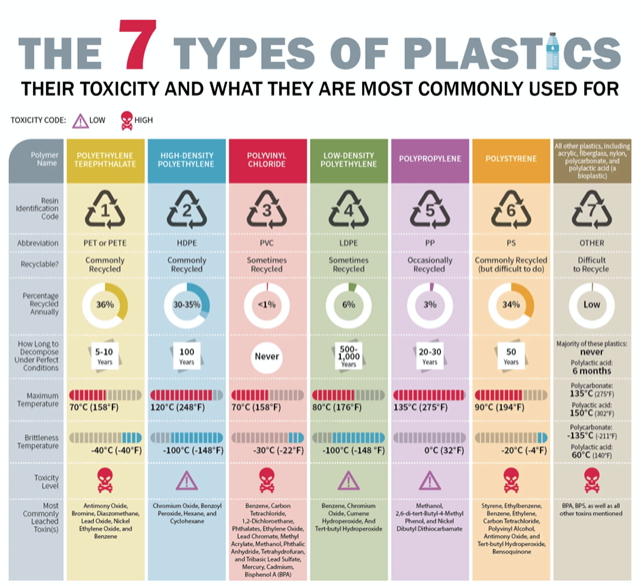
Concerns with Plastic Pollution
- Massive & Mismanaged Plastic Waste Generation:
- India generates 9.3 million tonnes of plastic waste annually—burning 5.8 mt and leaking 3.5 mt into the environment—making it the world’s top plastic polluter (Nature, 2024), surpassing Nigeria, Indonesia, and China.
- Environmental & Health Hazards:
- Open burning releases toxic emissions, worsening air quality and respiratory issues.
- Plastic clogs drains and rivers, increasing urban flooding (e.g., Mumbai) and harming aquatic life.
- Single-use plastics (SUPs), which form 43% of waste, persist for centuries, polluting land and oceans.
- High phthalate levels in drinking water reported in Delhi, Chennai, and Jabalpur; microplastic exposure is severe in cities like Mumbai.
- EDCs from plastics linked to early puberty, cognitive delays, and obesity in children.
- Economic & Agricultural Impact:
- India risks losing $133 billion in plastic packaging value by 2030 due to uncollected waste.
- Microplastics in soil, from mulching films and untreated wastewater, degrade fertility and food safety.
- E-commerce growth has intensified non-recyclable packaging waste.
- Weak Infrastructure & Poor Regulation:
- Lack of sanitary landfills, poor waste segregation, and outdated recycling technology impede management.
- Informal recycling sector remains unregulated, affecting traceability and safety.
- Implementation of Plastic Waste Management Rules (2024) and EPR is weak.
- Despite bans, SUPs remain prevalent due to their low cost and easy availability.
- Data & Policy Gaps:
- Official plastic waste collection claims (95%) are inflated; actual rates are around 81%, limiting effective planning.
- Global Disparity in Waste Handling:
- Though India’s per capita plastic use is low (0.12 kg/day), poor waste systems cause higher environmental leakage compared to high-income nations with better disposal infrastructure.
Example: Despite SUP bans, items like polythene bags and Styrofoam containers are still common in markets, underlining enforcement challenges.
India’s key initiatives related to Plastic Waste Management:
- Swachh Bharat Mission (SBM):
- Launched: 2014 (Phase II from 2020 onwards)
- Aim: Promote cleanliness, sanitation, and solid waste management, including plastic waste.
- Plastic Focus: Encourages waste segregation at source, bans single-use plastics (SUPs), and promotes awareness campaigns on reducing plastic use.
- India Plastics Pact:
- Launched: 2021 by Confederation of Indian Industry (CII) and WWF-India
- Aim: Create a circular economy for plastics by 2030.
- Targets:
- Eliminate unnecessary plastic packaging
- Ensure 100% reusable, recyclable, or compostable packaging
- Increase recycling rates and use of recycled content in packaging
- Unique Feature: Voluntary industry-led commitment involving FMCG, retailers, and recyclers.
- Project REPLAN (REducing PLastic in Nature):
- Launched by: Khadi and Village Industries Commission (KVIC)
- Objective: Use recycled plastic waste in handmade paper production.
- Approach: Integrates plastic waste into paper-making to reduce environmental load while promoting rural employment and innovation.
- Un-Plastic Collective:
- Launched by: UN Environment Programme (UNEP), WWF-India, and Confederation of Indian Industry (CII)
- Objective: Mobilize businesses and stakeholders to reduce plastic footprint.
- Focus:
- Eliminate unnecessary plastics
- Promote sustainable alternatives
- Influence consumer behavior through corporate responsibility
- GoLitter Partnerships Project:
- Supported by: European Union and UNEP
- India Participation: Chennai selected as a pilot city
- Goal: Tackle marine litter and plastic leakage into water bodies.
- Approach: Strengthen waste management systems, policy frameworks, and public awareness in coastal cities.
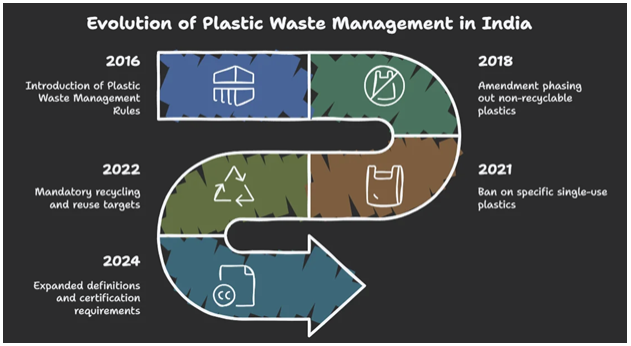
Where to use :
Paper I( Geography Optional ) : Environment Geography
Paper III ( General Studies ) : Environment preservation and conservation
Source :
EARTH’S OLDEST KNOWN ROCKS
Why in news : A volcanic rock formation in the Nuvvuagittuq Greenstone Belt of Quebec, Canada, has been dated to approximately 4.16 billion years old, making it the oldest known rock on Earth. It dates back to the Hadean eon (4.5–4.03 billion years ago), a period shortly after Earth's formation around 4.6 billion years ago.
About:
A remarkable discovery in Quebec’s Nuvvuagittuq Greenstone Belt has pushed the boundaries of geological knowledge — volcanic rocks dated to be approximately 4.16 billion years old are now recognized as the oldest intact rocks on Earth. These ancient formations, originating from the Hadean eon (4.5–4.03 billion years ago), offer an extraordinary glimpse into Earth’s infancy, shortly after the planet’s formation around 4.6 billion years ago.
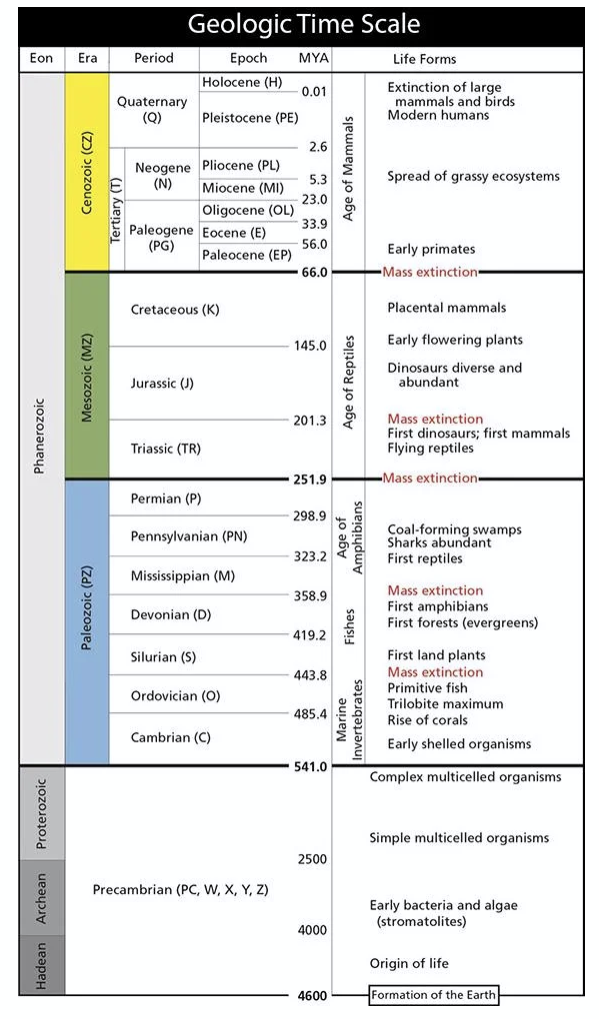
Geological Significance:
The rocks are metamorphosed volcanic basalts, formed when magma solidified beneath the Earth’s surface. Over time, they were altered by intense heat and pressure, but crucially, they remain intact — preserving vital information about Earth’s early crustal development. These rocks act as a geological time capsule, providing rare insights into:
- The formation of Earth’s primordial crust
- Conditions that led to the emergence of shallow oceans
- The chemical environment where life may have originated
This is particularly important because direct evidence from the Hadean eon is extremely rare due to the dynamic nature of plate tectonics and erosion over billions of years.
Dating the Ancient Earth:
The rocks were dated using two independent radioactive decay methods, including the samarium-neodymium (Sm-Nd) isotopic system, which is reliable for determining the age of ancient volcanic and igneous rocks. These tests confirmed the rocks’ age at 4.16 billion years, establishing them as the oldest known preserved geological formations on the planet.
In contrast, the oldest minerals ever found are zircon crystals from the Jack Hills of Western Australia, dated to around 4.4 billion years. However, zircons are microscopic fragments, whereas the Quebec basalts are part of a coherent rock formation — making them vastly more valuable for understanding large-scale early Earth processes.
Revisiting the Hadean Eon:
Traditionally, the Hadean eon was thought to be a molten hellscape, marked by rampant volcanism, asteroid bombardment, and an uninhabitable surface. However, findings from the Nuvvuagittuq rocks are challenging this narrative. Geochemical evidence suggests:
- A cooling solid crust had already begun forming
- Shallow oceans may have existed as early as 4.3 billion years ago
- An early atmosphere, potentially rich in water vapor and simple gases, was beginning to stabilize
These clues align with isotopic evidence from ancient zircons suggesting the presence of liquid water on Earth’s surface as early as 4.3–4.4 billion years ago — a critical condition for the emergence of life.
Implications for Origin-of-Life Studies:
These rocks may hold the chemical fingerprints of prebiotic processes, potentially revealing what Earth was like when life first began to form. Their composition might point to early hydrothermal activity, a setting many scientists consider ideal for the origin of life due to its rich mineral diversity and energy flow.
Conclusion:
The discovery of the 4.16-billion-year-old rocks in Quebec is not just a scientific milestone — it is a profound reminder of Earth’s deep-time history. These rocks expand our understanding of the planet’s early formation, crustal evolution, and environmental conditions that could have paved the way for life. As research continues, they may help bridge the gap between planetary formation and biological emergence, offering clues not only about Earth's past but also about early Earth-like conditions on other planets in our solar system and beyond.
Where to use :
Paper I ( Geography Optional ) : Rocks and Types
PaperI ( General Studies ) : Physical Geography
Source :
Coronal Mass Ejections
Coronal Mass Ejections (CMEs): CMEs are massive bursts of solar plasma and magnetic fields ejected from the Sun’s corona into space. When directed towards Earth, they can disrupt satellites, power grids, and communication systems by triggering geomagnetic storms. CMEs are key components of space weather and pose significant risks to high-latitude technological infrastructure and aviation systems.
Secondary Microplastics
Secondary Microplastics: Secondary microplastics are tiny plastic particles (typically <5 mm) formed by the degradation of larger plastic items due to physical, chemical, and biological processes like UV radiation, mechanical abrasion, or microbial action. Unlike primary microplastics, which are intentionally manufactured at small sizes, secondary microplastics are unintentional by-products and are a major pollutant in oceans, soils, and food chains.
Flue Gas Desulphurisation (FGD)
Flue Gas Desulphurisation (FGD): FGD is a pollution control technology used in thermal power plants and industrial units to remove sulfur dioxide (SO₂) from exhaust flue gases before they are released into the atmosphere. Wet FGD systems typically use a limestone slurry to neutralize SO₂, reducing acid rain and improving air quality. India has mandated FGD installation in coal-based plants for emission control.
Triple Planetary Crisis
Triple Planetary Crisis: The Triple Planetary Crisis refers to the interconnected global environmental threats of climate change, biodiversity loss, and pollution. Recognized by UNEP, this framework emphasizes that these crises reinforce each other and must be tackled holistically through systemic transformations in energy, land use, and waste management to ensure ecological resilience and sustainable development.
Enhanced Rock Weathering (ERW)
Enhanced Rock Weathering (ERW): ERW is a carbon dioxide removal strategy involving the spreading of finely ground silicate rocks (like basalt) over land. These rocks chemically react with atmospheric CO₂ and rainwater to form stable bicarbonates that are eventually washed into oceans. It accelerates natural weathering processes and has co-benefits like improving soil fertility and pH regulation, making it a promising climate mitigation tool.
Environmental Impact of the Ukraine Conflict
- The extensive use of artillery shells, mines, drones, and missiles has introduced heavy metals and toxic compounds into Ukrainian soil. The contaminants pose long-term risks to agriculture and human health.
- Damage to Agricultural Land: Approximately 23% of Ukraine’s land has been littered with landmines, rendering vast areas unsuitable for farming (As per UNDP). It affects not only food production but also the livelihoods of farmers, and it destroys Ukraine’s capacity to be the breadbasket of Europe.
- Explosions and fires have increased the concentration of particulate matter in the air, posing severe respiratory health risks to the population.
Where to use :
General Studies : Impact of War on Environment
Places in News - 10 July 2025
1. Anand
Why in news : Union Home and Cooperation Minister inaugurated Tribhuvan Sahkari University in Anand, Gujarat, India’s first national cooperative university
About:
- Anand is located in central Gujarat, India, between Vadodara and Ahmedabad, forming part of the fertile Charotar region.
- Known as India's Milk Capital due to the White Revolution spearheaded by Dr. Verghese Kurien from Anand-based AMUL (Anand Milk Union Ltd.).
- Forms part of the Ahmedabad–Vadodara industrial corridor, enabling regional urban-rural integration.
- Approx : Vadodara
2. Kariyachalli Island
Why in news : Tamil Nadu, under the TNSHORE (Tamil Nadu Sustainably Harnessing Ocean Resources) project, is working to protect the ecologically vital Kariyachalli Island in the Gulf of Mannar, which has shrunk by over 70% since 1969 and may be submerged by 2036.
About :
- Kariyachalli Island is one of the 21 uninhabited islands in the Gulf of Mannar Marine National Park.
- It lies 4 km south of Sippikulam and 20 km northeast of Thoothukudi, between Rameswaram and Thoothukudi.
- The island is a low-lying landform made of reef debris, sand dunes, spits, and sandy plains.
- Located in India’s coral reef zone, it supports 4,300+ marine species, including 132 coral types and the endangered dugong.
- Approx: Tuticorin
3. Nizamabad
Why in news : The Union Home Minister inaugurated the National Turmeric Board in Nizamabad, Telangana, to develop a complete value chain for turmeric, including packaging, branding, marketing, and export.
About :
- Nizamabad, District city in the Indian state of Telangana.
- The city is bounded on the North by Nirmal, on the East by Jagtial and Karimnagar, on the South lies Kamareddy, and on the West it shares its boundaries with Nanded of Maharashtra state.
- Climate is tropical savanna with most rainfall from June to October.
- Approx : Karimnagar
4. Agasthyamalai HIlls / BR
Why in news : Elettaria facifera and Elettaria tulipifera are two new species recently seen in the hills
About :
- It is part of a 3,500 sq. km biosphere reserve recognised by UNESCO.
- It stretches across Tamil Nadu and Kerala in the southernmost stretch of the Western Ghats.
- The Neelakkurinji flower, which blooms once every 12 years, grows in this landscape.
- Lion-Tailed Macaque, Bengal Tiger, Nilgiri Marten, Nilgiri Tahr, Malabar Spiny Dormouse, Great Pied Hornbill, Gaur (Indian bison), Sloth Bear found in this region.
- The region is inhabited by indigenous communities, especially the Kani tribe.
- Approx : Tirunelveli
5. Kolhapur
Why in news : Italian luxury fashion brand Prada has acknowledged that its men’s footwear design was inspired by traditional Indian handcrafted footwear, after facing backlash for the sandals’ strong resemblance to GI-tagged Kolhapuri chappals, which artisans argue constitutes cultural appropriation and a violation of the GI tag.
About :
- It is a city on the banks of the Panchganga River in the southern part of the Indian state of Maharashtra.
- Kolhapur is known as 'Dakshin Kashi' or Kashi of the South .
- The city receives abundant rainfall from June to September, attributed to its proximity to the Western Ghats.
- It has a higher per capita domestic product than the state's average. It has auto-ancillary, foundry and casting industrial establishments which act as supporting units for industries in Sangli, Satara, Pune and Bangalore.
Fortnightly KOSMOS MCQs Practice - 10th July 2025
Q1. Consider the following statements regarding Glaciers :
1. Glaciers are large, slow-moving masses of ice formed over centuries through the compaction of snow and hold nearly 70% of the Earth’s freshwater reserves.
2. The Hindu Kush Himalaya (HKH) region, often called the “Water Tower of Asia,” supplies around 40% of the water flow to the Indus River system.
3. Venezuela, with the disappearance of the Yala Glacier, became the second country after Slovenia to have lost all of its glaciers
How many of the statements given above is/are correct?
- Only One
- Only Two
- All Three
- None
Q2. Consider the following statements regarding Pulsars:
1. Pulsars are highly magnetized, rapidly rotating neutron stars that emit beams of electromagnetic radiation.
2. The regular pulsing observed from pulsars is caused by fluctuations in their magnetic field strength, leading to irregular bursts of radiation detectable from Earth.
Which of the statements given above is/are correct?
- 1 only
- 2 only
- Both 1 and 2
- Neither 1 nor 2
Q3. Consider the following statements:
1. Gross Irrigated Area (GIA) refers to the cumulative area irrigated for all crops during different seasons in an agricultural year, with land irrigated multiple times being counted only once.
2. Irrigation falls under the State List in India, making the respective State Governments responsible for its planning, implementation, and financing.
3. The "Per Drop More Crop" initiative, a key component of the Pradhan Mantri Krishi Sinchayee Yojana (PMKSY), is overseen by the Ministry of Jal Shakti.
How many of the statements given above is/are not correct?
- Only One
- Only Two
- All Three
- None
Q4. With reference to India’s electricity installed capacity in the year 2025, arrange the following energy sources in descending order of their contribution:
1. Oil & Gas
2. Solar
3. Wind
4. Hydro
5. Nuclear
Select the correct answer using the codes given below:
- 2 - 3 - 4 - 1- 5
- 1 - 5 - 3 - 2- 4
- 1 - 2 - 3 - 4- 5
- 3 - 2 - 1 - 4- 5
Q5. Consider the following statements:
1. It is Europe’s largest and one of the world’s most active volcanoes.
2. It is located on Sicily’s east coast in the Mediterranean Sea.
3. It is a continuously active stratovolcano with five summit craters.
Which of the following volcanoes best matches the above description?
- Mount Etna
- Mount Vesuvius
- Mount Stromboli
- Mount Teide
Q6. Consider the following statements regarding Stratospheric Aerosol Injection (SAI):
1. SAI is a solar geoengineering method designed to mitigate global warming by reflecting a portion of incoming solar radiation back into space.
2. The technique involves releasing reflective particles, such as sulfate aerosols, into the stratosphere at altitudes generally ranging from 10 to 50 kilometers.
Which of the statements given above is/are correct?
- 1 only
- 2 only
- Both 1 and 2
- Neither 1 nor 2
Q7. Consider the following statements regarding the Great Indian Bustard, :
1. It is one of the heaviest flying birds globally and holds the status of the state bird of Rajasthan.
2. As an omnivore, it functions as an indicator species, signifying the overall health of grassland ecosystems.
3. Although listed as Critically Endangered on the IUCN Red List, it receives the highest level of protection under Schedule I of the Wildlife (Protection) Act, 1972.
How many of the statements given above is/are correct?
- Only One
- Only Two
- All Three
- None
Q8. The Chenab River originates near which of the following mountain passes?
- Rohtang Pass
- Bara Lacha Pass
- Zoji La
- Nathu La
Q9. Consider the following statements regarding Red Dwarfs:
1. They are the smallest and coolest stars in the universe.
2. They have a much longer lifespan, shining for trillions of years.
3. Proxima Centauri, the farthest star to the Sun, is a Red Dwarf.
Which of the statements given above are correct?
- 1 and 2 only
- 2 and 3 only
- 1 and 3 only
- 1, 2 and 3
Q10. Consider the following statements, Regarding the Indian Grey Wolf :
1. It is a nocturnal apex predator that hunts in small packs and is relatively less vocal than other wolf subspecies.
2. It is of intermediate size between the Tibetan and Arabian wolves, and lacks a thick winter coat, adapting instead to warmer climates.
3. It is listed under Schedule I of the Wildlife Protection Act, 1972, granting it the highest level of legal protection.
How many of the statements given above is/are correct?
- Only One
- Only Two
- All Three
- None
Share the article
Edukemy’s Current Affairs Quiz is published with multiple choice questions for UPSC exams
MCQ
Get Latest Updates on Offers, Event dates, and free Mentorship sessions.

Get in touch with our Expert Academic Counsellors 👋
FAQs
Geography Current Affairs focuses on the contemporary issues, events, and developments in the field of geography. It covers recent geographical phenomena, environmental changes, geopolitical shifts, and related news. This differs from regular geography studies which may focus more on foundational concepts, historical contexts, and theoretical frameworks.
Updates are provided regularly to ensure that subscribers stay informed about the latest developments in geography. Typically, updates are provided on a fortnightly basis, depending on the frequency of significant events and changes in the field.
Absolutely. Geography Current Affairs serves as a valuable resource not only for Geography optional but also for GS papers, especially GS Paper 1 (covering Indian Heritage and Culture, History, and Geography of the World and Society) and GS Paper 3 (covering Technology, Economic Development, Biodiversity, Environment, Security, and Disaster Management). It aids in building a holistic understanding of various topics and strengthens answer-writing skills by incorporating contemporary examples and perspectives.
Geography Current Affairs holds immense importance for UPSC preparation, particularly for aspirants opting for Geography optional. It helps candidates stay updated with the latest developments, geographical phenomena, environmental issues, and geopolitical shifts worldwide, aligning them with the dynamic nature of the subject as tested in the UPSC examinations.

